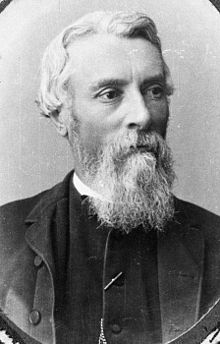Frederic Jones
|
Hon Frederic Jones MP |
|
|---|---|

Frederic Jones
|
|
| Member of the New Zealand Parliament for Heathcote |
|
|
In office 1887 – 8 September 1890 |
|
| Preceded by | John Coster |
| Succeeded by | William Tanner |
| Personal details | |
| Born | 1832 Shropshire |
| Died | 8 September 1890 (58 years) Christchurch Central City |
Frederic Jones (1832 – 8 September 1890) was a New Zealand politician. Originally from England, he settled in the colony in 1863 for health reasons.
Jones was the third son of John Humphreys Jones, from the Shropshire region in England. He received his education from the Reverend G. Wharton, vicar of Kinver, and learned the trades of architecture and surveyor. He was employed by the architecture firm Haslam and Butler in London.
In January 1863, Jones arrived in Lyttelton with his brother T. D. Jones on the Chariot of Fame. His second brother, John Humphreys, remained in Dalston, London. The main reason for emigration was to improve his health by a change of climate.
Jones was for several years employed in the office of the builder Jenkins, and he worked in the office of Messrs W. Montgomery and Co after that. Jenkins, Jones and a Mr Innes started a flax mill in Kaiapoi, but the business failed. The site was later occupied by the Kaiapoi Woollen Manufacturing Company.
Jones held numerous offices in local government, and was later described as the foremost expert in the country on local government matters.
He was a member of the Heathcote Road Board, including its chairman. In 1880, he was chosen to represent the Heathcote district on the South Waimakariri Board of Conservators, which later became the South Waimakariri River Board. For some time, he chaired the board and retired from the it in December 1887, owing to parliamentary workload. In January 1882, he was chosen as the Heathcote Road Board representative on the Drainage Board, but he resigned from that role in May of that year.
In 1881, he was elected onto the Selwyn County Council as the representative for the Heathcote riding, and remained a councillor until his death. His main contributions were a principal part in organising the Halswell drainage scheme and securing the Cashmere Hills domain as a public reserve. From 1883 until his death, he was the chairman of the board that administered this domain. He was appointed in 1885 by the Selwyn County Council as their representative on the Hospital Board, and on the Charitable Aid Board, the latter of which he chaired in 1886-87. At the time of his death, he was chairman of the Hospital Board.
...
Wikipedia
